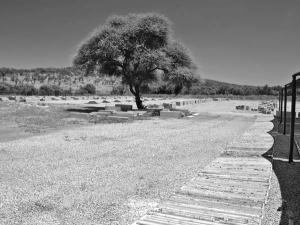Vancouver — Platinum Group Metals (PTM-T, PLG-X) and its Western Bushveld Joint Venture (WBJV) partners, Anglo Platinum (ANP-L, AMS-J) and Wesizwe Platinum (WEZ-J), are looking to refine some of the mine design details outlined in last year’s prefeasibility study for the South African platinum deposit.
Part of a feasibility study currently under way, proposals include boosting the production rate from the early ore, optimizing capital requirements, deferring some capital spending and reducing electrical consumption at the operation.
The increase in early production at the Project 1 mine, part of the WBJV project, is aimed at speeding up payback and sweetening the economics of the planned mine. Decline development plans continue to target planned annual production of 250,000 oz. of combined platinum, palladium, rhodium and gold, however construction of a vertical shaft — part of the current mine plan — may be deferred to reduce early stage capital costs.
Potential power shortages are also top of mind for the partners.
South African power utility Eskom has been struggling to keep up with rising demand — as witnessed by an increasing number of blackouts throughout the nation. The utility has proposed power rationing, or quotas, as an interim method to deal with the issue.
“Major mine development in South Africa is facing increased risks of a shortage of available grid power in the next five years,” said Platinum Group Metals president R. Michael Jones in a statement. “Current mine design provides a significant strategic advantage and our engineering team is working to optimize the proposed design and respond to concerns regarding power supply. We have shallow resources that can be accessed quickly with lower capital costs and reduced electrical demands when compared to deep ounces.”
The WBJV partners are also looking at minimizing power requirements at Project 1, and have held planning meetings with Eskom — which has suggested that an allocation of 2 megawatts for project construction is possible.
The partners are considering the use of diesel power generation to offset potential shortfalls — although that would boost capital and operating costs. Electrical demand at the mine is expected to increase by late 2012.
Work on the feasibility study is slated to wrap up by mid-year with a production start still anticipated for 2010 — assuming appropriate permits are received in time.
The WBJV partners have begun the public consultation stage in its permit application process, which will run at the same time as its feasibility-engineering optimization program.
In mid-2007, a resource update on the Project 1 section of WBJV reviewed 44.23 million measured and indicated tonnes grading 3.27 grams platinum per tonne, 1.37 grams palladium, 0.34 gram rhodium and 0.16 gram gold on the UG2 and Merensky Reef units.
The Bushveld layered igneous complex in the northern part of the country hosts about 75% of the world’s platinum group metal (PGM) resources. The 350-km-diameter structure was formed from multiple injections of magma into a chamber where it slowly cooled, allowing for segregation and “layering” of different minerals during the crystallization process. Precipitation of certain minerals resulted in the accumulation or concentration of some elements, such as platinum, palladium, chromium and vanadium, into economic deposits.
Main producing areas of the Bushveld complex are around its rim, as the centre is deeply covered by rock sequences. Two principal mineralized horizons, the Merensky and Upper Group 2 (UG2) reefs, are being worked in the eastern and western limbs of the complex. The layers are quite thin, usually less than 1 metre, requiring labour-intensive underground mining.
PGM resources on the WBJV are primarily hosted in three distinct units. In the Merensky Reef, which contains about 80% of the resource, mineralization occurs both in a pegmatoidal feldspathic pyroxenite unit and in the contact reef. PGMs also occur in the UG2 chromitite seam.
Platinum Group Metals, the project operator, and Anglo Platinum each hold 37% interests in Project 1, while Wesizwe Platinum has a 26% stake it acquired through its takeover of the project’s previous Black Economic Empowerment company, Africa Wide Mining.


Be the first to comment on "Western Bushveld partners fine-tune feasibility"